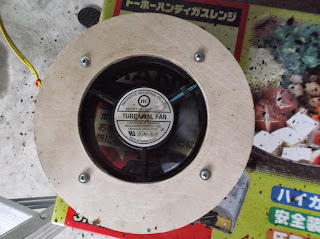Today (Oct. 27), my son and I went for mushroom hunting for the third time in this season, as requested by my son (by which I mean I was reluctant). It rained throughout the daytime.
今日(10/27)は、息子と今シーズン3回目のきのこ狩りに行きました。息子のリクエストです(と言うことは私自身は行きたくなかったということ)。日中ずっと雨が降っていました。
My son wanted to gather this species, among others.
息子は特にこの種類のきのこを採りたがっていました。
Shimofuri shimeji Tricholoma portentosum
シモフリシメジです。
シモフリシメジです。
We got 13 of them in total.
全部で13個採りました。
全部で13個採りました。
It was already late fall.
もう晩秋(ばんしゅう)でした。
もう晩秋(ばんしゅう)でした。
My son found mukitake (Sarcomixa serotina) growing on some tall trees, like this one,
息子は、このような高い木にムキタケが生えてるのを見つけましたが、
息子は、このような高い木にムキタケが生えてるのを見つけましたが、
but they were too high for us to pick!
高過ぎて採れませんでした。
My son also found these masutake (Laetiporus sulphureus (Fr.) Murrill), but they were too old to eat.
息子はこのマスタケも見つけましたが、老菌(ろうきん)でした。
As I said above, it was rainy, and it was very cold (around 5C).
前に言ったように雨は降っていたし、とても寒かった(5C前後)です。
前に言ったように雨は降っていたし、とても寒かった(5C前後)です。
Shimofuri shimeji, cleaned by my son
息子が洗ったシモフリシメジ
息子が洗ったシモフリシメジ
Large mukitake:
大きなムキタケ:
大きなムキタケ:
Smaller ones:
小さいムキタケ:
小さいムキタケ:
As requested by my son, I wrapped some large ones with bacon and heated in the toaster oven.
息子のリクエストで、大きいムキタケの一部はベーコンで巻いて、オーブントースターで火を通しました。
息子のリクエストで、大きいムキタケの一部はベーコンで巻いて、オーブントースターで火を通しました。
Other edible mushrooms we collected today:
今日採れた他の食べれるきのこ:
今日採れた他の食べれるきのこ:
As requested by my son, I made osumashi (osuimono), i.e., clear soup, with the shimofuri shimeji.
息子のリクエストで、シモフリシメジでお澄まし(お吸い物)を作りました。
The mushrooms were carefully divided among the four of us by my son.
きのこは息子が慎重に4人分に分けました。
息子のリクエストで、シモフリシメジでお澄まし(お吸い物)を作りました。
The mushrooms were carefully divided among the four of us by my son.
きのこは息子が慎重に4人分に分けました。



















































